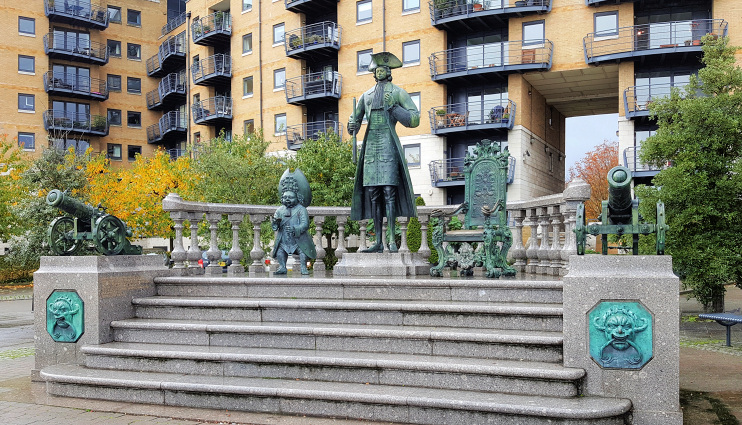Deptford
Deptford, Lewisham/Greenwich
A historic Thames-side settlement, situated west of Greenwich

Deptford’s existence was first mentioned in 1293 – when it was called Depeford. The ‘deep ford’ crossed what is now Deptford Creek, at the mouth of the River Ravensbourne.
Henry VIII founded a naval dockyard here in 1513 and within a century Deptford had become one of the country’s leading ports and a major industrial suburb. In The Spirit of London’s River, LM Bates says of Deptford waterfront: “This was the ground from which, more than any other, grew the British Empire.”
Several of the greatest figures of 16th- and 17th-century English history had associations with Deptford. In 1577 Francis Drake sailed from Deptford via Plymouth for a three-year circumnavigation of the globe, claiming a portion of present-day California for Elizabeth I . On his return, Drake was knighted by the Queen after she had dined aboard the Golden Hind at Deptford.
In 1593 the dramatist Christopher Marlowe was killed here, reputedly in a tavern brawl. Anthony Burgess’s A Dead Man In Deptford is among the works to suggest a conspiratorial aspect to the affair.
The diarist John Evelyn came to Deptford in 1652 to live at Sayes Court – a house belonging to his wife’s family – which he rented to Peter the Great of Russia when he visited London in 1698 to study the art of shipbuilding. The photograph above shows a statue of Peter (and a court dwarf) by the sculptor Mihail Chemiakin and architect Viacheslav Bukhaev, erected in 1999 outside the then newly built Greenfell Mansions, part of the Millennium Quay development that occupies the former site of Deptford power station.
John Evelyn discovered woodcarver and sculptor Grinling Gibbons toiling in a lowly Deptford workshop and introduced him to Christopher Wren. Gibbons went on to become a master carver under five British sovereigns. Another illustrious diarist, Samuel Pepys, worked in Deptford as an admiralty official.
The southernmost part of the district was laid out from 1805 and soon became known as Deptford New Town. St John’s church was built here in 1855 and has since endowed that locality with its name.
Deptford dockyard closed in 1869 and was replaced by a cattle market that closed in 1913. Through Second World War bombing and postwar industrial decline, Deptford suffered a long and damaging period of deterioration but over the past quarter-century it has been the focus of extensive regenerative building – both commercial and residential – especially along the Thames waterfront and around Deptford Bridge in the south. Trinity Laban’s faculty of dance opened at Deptford Creekside in 2002 and has since been engulfed by a “vibrant creative community” called Creekside Village.
Deptford High Street still has terraced buildings from the late 17th century and the 18th century and – although they are sometimes hard to spot amongst all the newer intrusions – they represent an undervalued part of London’s architectural heritage.

Deptford has a large black community, mostly of African origin. (The photo above shows a scene in Deptford Market in 2017.) With few pensioners and many children, the average resident of Evelyn ward is aged only 30.7 – compared with 38.6 for the whole of England and Wales. Under a fifth of homes are owner-occupied and 15 per cent are lone parent households.
The National Maritime Museum has LS Lowry’s nondescript Deptford Power Station: from Greenwich (1959).
The rock band Dire Straits was founded in Deptford in 1977.
Postal district: SE8
Population: 16,603 (Lewisham’s Evelyn ward, 2011 census)
Stations: South Eastern (Deptford, zone 2) and Docklands Light Railway, Lewisham branch (Deptford Bridge, zones 2 and 3)
Further reading: John Coulter, Around Lewisham and Deptford in Old Photographs, The History Press, 2005
and Neil Gordon-Orr, Deptford Fun City: A Ramble Through the History and Music of New Cross and Deptford, Past Tense, 2004
Blog: The Deptford Dame
